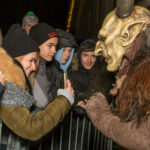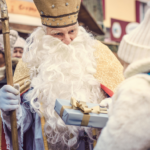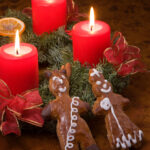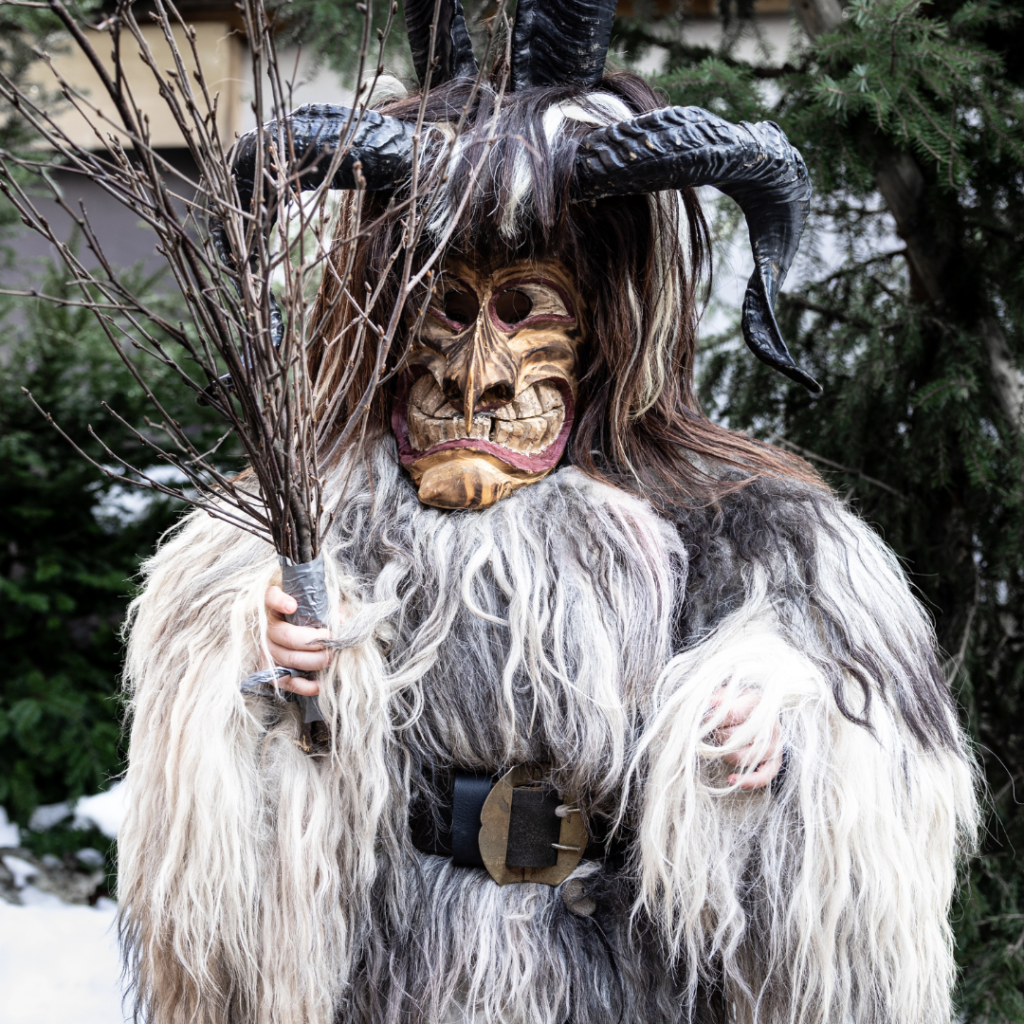 Learning about their culture and customs is one of the best parts of living in another country. As an American, I grew up with Santa Claus, referred to as Jolly Old Saint Nick. He is always portrayed as jovial and kind, bringing gifts to children who behave throughout the year.
Learning about their culture and customs is one of the best parts of living in another country. As an American, I grew up with Santa Claus, referred to as Jolly Old Saint Nick. He is always portrayed as jovial and kind, bringing gifts to children who behave throughout the year.
In Germany, they celebrate Saint Nicholas on December 6th, but they also celebrate Krampusnacht (or Krampus night) the evening before. On this night, Krampus, the saint’s evil counterpart, visits their homes and villages. This traditional European festival originated in the Alpine folklore of Austria, Germany, Hungary, and Slovenia. It is a unique and eerie experience, yet often playful.
Who is Krampus? He is a horned, rather demonic-looking anthropomorphic figure who visits children who have been naughty. Often portrayed with hooves and horns, he carries a bundle of birch branches in order to swat those who misbehave. He is the opposite of the gentle, benevolent Saint Nicholas, who brings presents and sweets to well-behaved children.
While the kind Saint Nicholas arrives in his sleigh with the tinkling of bells, the demonic-looking Krampus roars in with the clanging of his heavy chains. The origin of the name stems from the word Krampen, meaning claws. He may use these to drag you away if you’ve been bad!

During Krampusnacht, on December 5th, people dress up and participate in parades, parties, and other festivities. Often, these involve elaborate costumes and masks. People play tricks on each other and partake in frightening antics designed to scare as well as entertain. Many towns sponsor parades where costumed Krampuses roam the streets, interacting with bystanders and generally engaging in mischievous behavior.
Costumes and masks are based on the traditional folklore of the local area and vary greatly. However, the typical Krampus is hairy with hooves, horns, and demonic features. He carries chains and birch switches. These costumes are constructed with intense attention to detail and are quite intricate in design.
Portraying Krampus involves much interaction with attendees, whether at a parade or a party. So, beware of being chased or frightened. But remember, while it is associated with the dark side of the festive season, it is all in the name of lighthearted entertainment.
And on the following morning, you wake to the goodness and benevolence of Saint Nicholas, especially if you’ve been a good boy or girl. December 6th is the Feast of Saint Nicholas, a Christian holiday based on the bishop who lived in Myra in the 4th century. He was known for his generosity and kindness, particularly to those in need.
This is a day of gift-giving, commemorated by the exchange of small gifts. In Bavaria, children leave their shoes out the night before to awaken in the morning to find them filled with treats and gifts. I suppose this is the origin of hanging up our stockings for Santa Claus. As with Krampusnacht, the traditions here vary by region. In some areas, large festivals and parades are held, while in others, smaller private, family observances are held.

For many Christians, it is a time for reflection, and churches may hold services or prayers to honor the saint. Saint Nicholas is usually depicted in a red or white robe with a long, flowing white beard.
Whether you celebrate Krampusnacht, the Feast of Saint Nicholas, or both, it is a time of joy, generosity, and just plain fun.
